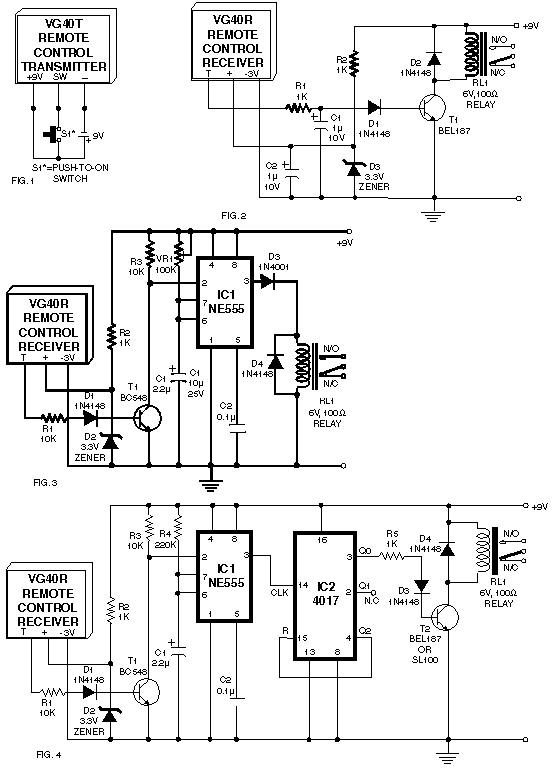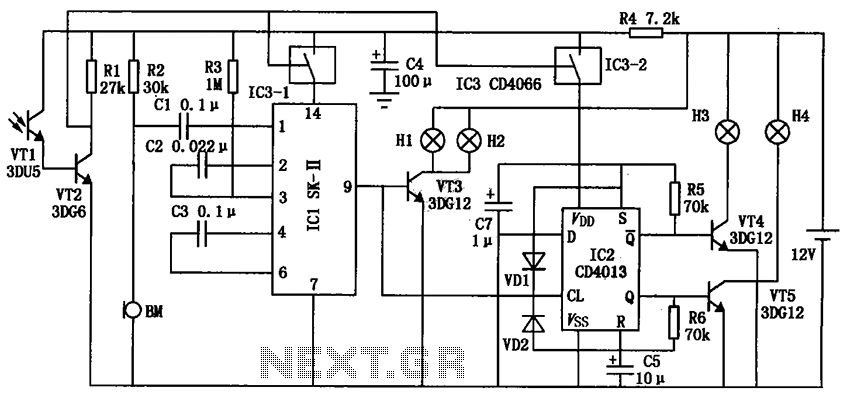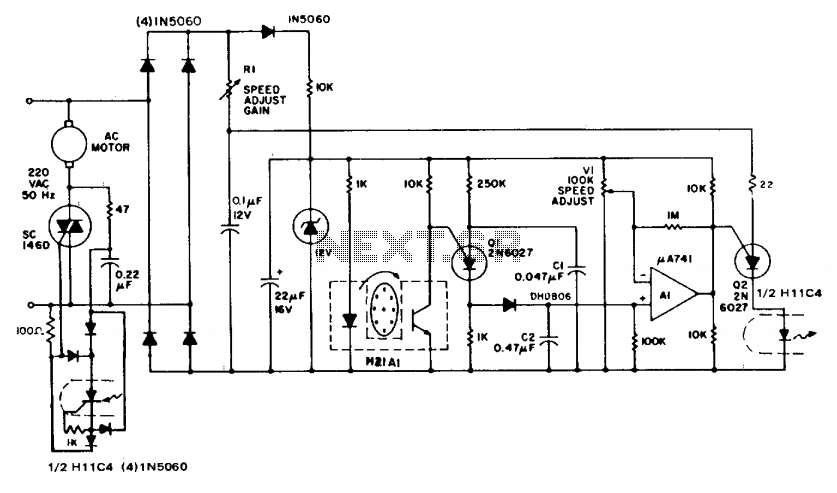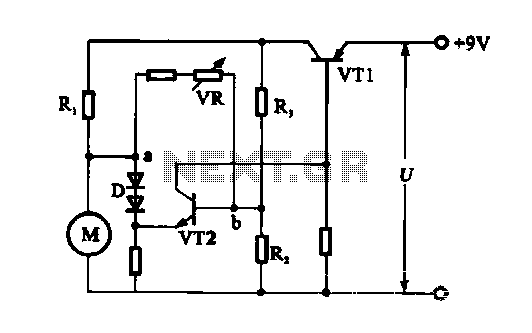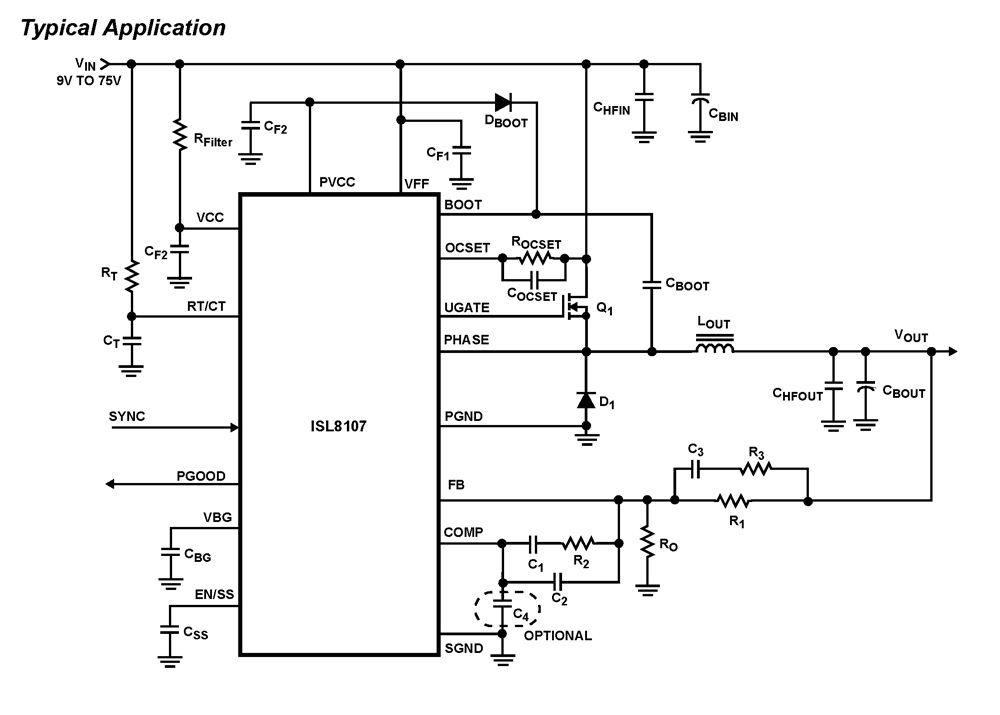
Infrared control dimming circuit
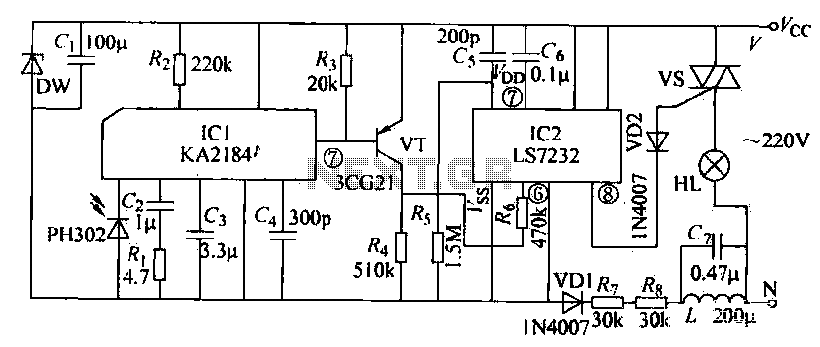
The receiving circuit operates as follows: when the infrared receiver detects a signal from the remote control transmitter, the KA2184 processes this signal, resulting in a low output at the pin. This low output is directly connected to the base of the transistor VT, turning it on. The collector current then produces a high-level output at the upper end, which is connected to R4. This high-level signal is applied to the LS7232 through R6, serving as the auxiliary input for the dimming circuit. The circuit functions as an infrared remote control dimmer. When a trigger signal is received at the pin input, it continuously outputs control pulses to a bidirectional thyristor through the designated pin, allowing the TRIAC's conduction angle to vary between 410° and 160°. As the conduction angle of the thyristor changes, the brightness of the lamp can be adjusted from dark to light or vice versa, enabling effective dimming control. During the dimming process, to increase brightness, the user must press and hold the button on the remote control, which continuously transmits the control signal. The lamp will gradually brighten until the desired brightness is reached; releasing the button will maintain this brightness level. If the button is continuously pressed, the lamp will gradually dim until it turns off. It is important to note that the LS7232 is a PMOS type integrated circuit, which requires a reverse power polarity compared to conventional CMOS circuits. Therefore, it should be connected to the negative power supply terminal, while the Vss terminal must be connected to the positive supply. The circuit is powered using an AC power source, with capacitor C7 functioning as a bucking element, and a half-wave rectifier diode (VDI) included in the design. Unlike other capacitor-based step-down power supply circuits, the buck capacitor C7 is paralleled with a 220 µH inductor, which serves to absorb harmonics generated by the LS7232, preventing interference with other electrical devices through the power line.
The infrared remote control dimmer circuit is designed to provide a convenient and efficient means of controlling the brightness of lamps wirelessly. The KA2184 integrated circuit plays a crucial role in processing the infrared signals received from the remote control. Upon receiving a signal, the KA2184 activates the transistor VT, which in turn controls the TRIAC that regulates the power delivered to the lamp. This allows for smooth transitions in brightness, enhancing user experience.
The LS7232 serves as the core of the dimming functionality, acting as an auxiliary input that interprets the high-level signals from the dimming circuit. The use of a PMOS IC necessitates careful consideration of power connections to ensure proper operation, as its polarity requirements differ from typical CMOS components. This design choice enhances the reliability and performance of the circuit.
In terms of power supply, the circuit employs a half-wave rectification method, which is efficient for low-power applications such as lamp dimming. The addition of the inductor alongside the buck capacitor significantly reduces voltage spikes and noise, which is essential for maintaining stable operation and protecting sensitive components from potential damage.
Overall, this infrared remote control dimmer circuit exemplifies a practical application of modern electronic components to achieve user-friendly lighting control, showcasing the integration of various technologies to enhance everyday functionality.Receiving circuit as shown, when the infrared receiver receives the remote control signal emitted by the transmitter, after KA2184 processed by the pin output low. This added directly to the VT low base, it is turned on, its collector current output at the upper end of the formation of a high-level output R4 out. This high level is applied to the LS7232 by R6 dimming circuit auxiliary input ( feet). As the dimming control signal. This is an infrared remote control dimmer circuit, when it pin input trigger signal, it will continuously pin output control bidirectional thyristor control pulses through the foot, so that the TRIAC conduction angle at 410-160.
Changes between. With bi-product of the thyristor conduction angle changes, but also by the lights from the dark to light or light to dark, thus realizing the lamp dimming control. In the dimming process when required by the dark to bright lights, press and hold the button on the remote control transmitter continuously transmits a control signal.
Then you can see when the lights gradually brighten t When you reach the desired brightness immediately release the PTT button, then the brightness of the lamp will stay in this position. If continuous press down, the fork will gradually darken lights from light until extinguished. Note: LS7232 is a PMOS type IC, so its power polarity with conventional CMOS circuits contrary, that it's n.
It should be connected to the negative power supply terminal, and the Vss terminal should be connected to the positive supply. The circuit power is still using AC power supply, capacitor C7 buck, half-wave rectifier diode VDI. And other different capacitor step-down power supply circuit is that the power of the buck capacitor C7 in parallel with a 220yH inductance, its role is to absorb I.
S7232 harmonics generated to prevent it interfering with other electrical appliances through the power cord.
The infrared remote control dimmer circuit is designed to provide a convenient and efficient means of controlling the brightness of lamps wirelessly. The KA2184 integrated circuit plays a crucial role in processing the infrared signals received from the remote control. Upon receiving a signal, the KA2184 activates the transistor VT, which in turn controls the TRIAC that regulates the power delivered to the lamp. This allows for smooth transitions in brightness, enhancing user experience.
The LS7232 serves as the core of the dimming functionality, acting as an auxiliary input that interprets the high-level signals from the dimming circuit. The use of a PMOS IC necessitates careful consideration of power connections to ensure proper operation, as its polarity requirements differ from typical CMOS components. This design choice enhances the reliability and performance of the circuit.
In terms of power supply, the circuit employs a half-wave rectification method, which is efficient for low-power applications such as lamp dimming. The addition of the inductor alongside the buck capacitor significantly reduces voltage spikes and noise, which is essential for maintaining stable operation and protecting sensitive components from potential damage.
Overall, this infrared remote control dimmer circuit exemplifies a practical application of modern electronic components to achieve user-friendly lighting control, showcasing the integration of various technologies to enhance everyday functionality.Receiving circuit as shown, when the infrared receiver receives the remote control signal emitted by the transmitter, after KA2184 processed by the pin output low. This added directly to the VT low base, it is turned on, its collector current output at the upper end of the formation of a high-level output R4 out. This high level is applied to the LS7232 by R6 dimming circuit auxiliary input ( feet). As the dimming control signal. This is an infrared remote control dimmer circuit, when it pin input trigger signal, it will continuously pin output control bidirectional thyristor control pulses through the foot, so that the TRIAC conduction angle at 410-160.
Changes between. With bi-product of the thyristor conduction angle changes, but also by the lights from the dark to light or light to dark, thus realizing the lamp dimming control. In the dimming process when required by the dark to bright lights, press and hold the button on the remote control transmitter continuously transmits a control signal.
Then you can see when the lights gradually brighten t When you reach the desired brightness immediately release the PTT button, then the brightness of the lamp will stay in this position. If continuous press down, the fork will gradually darken lights from light until extinguished. Note: LS7232 is a PMOS type IC, so its power polarity with conventional CMOS circuits contrary, that it's n.
It should be connected to the negative power supply terminal, and the Vss terminal should be connected to the positive supply. The circuit power is still using AC power supply, capacitor C7 buck, half-wave rectifier diode VDI. And other different capacitor step-down power supply circuit is that the power of the buck capacitor C7 in parallel with a 220yH inductance, its role is to absorb I.
S7232 harmonics generated to prevent it interfering with other electrical appliances through the power cord.
